Mr. Neal Prince,
R.A., A.S.I.D
(Curriculum Vitae) |
|
|
|
Index Holdings Relating to the 1940's |
|
Index Holdings Relating to the 1950's |
|
Index Holdings Relating to the 1960's |
|
Index Holdings Relating to the 1970's |
|
Index Holdings Relating to the 1980's |
|
Index Holdings Relating to the 1990's |
Professional
Biography
2000's |
|
Mr.
Neal Prince Resource Image Data Base |
|
|
InterContinental
Hotels
Historical
Background
|
John B. Gates,
Chairman of the Board |
Robert Huyot,
Chairman of the Board |
Hans Sternick,
Chairman of the Board |
John P. Sutherland,
President
Latin American
Division |
Mario Di Genova,
President
Europe/Africa Divsions |
R. Kane Rufe,
Sr.
Vice President
Far East/Pacific Division |
John C. Carrodus
Sr.
Vice President
of Services |
Neal A. Prince
Vice
President
Graphics and Interior Designs |
|
|
|
Departmental Staff and Contractual
Designers: |
Kenneth Smith,
ASID |
Charles R Alvey,
Graphic
Designer |
Richard Simpson,
Graphic
Designer |
|
Bill Embery |
Dale & Pat Keller,
ASID |
Joe Grusczak,
ASID |
Trisha Wilson,
ASID |
James Ray Baker,
ASID |
Irene D'Alessio,
Interior Designer |
|
|
Arie deZanger,
IHC Photographer
|
|
 |
|
|
|
|
|
|
|
|
|
|
|
|
|
|
CONTACT
US |
|
|
 |

InterContinental Hotel was a subsidiary of
Pan Am Airlines
 |
|
* * * Webpage is being updated
* * *
|
Who
is Mr. Neal Prince? Mr. Prince is a trained
Architect from Rice University, an Art Historian,
Art Collector and a person with a vast passion for
Motion Pictures and Theatre History, especially
Set Designs. These elements came together to build
a foundation to Mr. Prince's skills, which later
became recognized as his ability for designing
Hotel and Restaurant Interiors. Mr. Prince
incorporated his own passions of above, into an
International branding philosophy that remains as
strong today as it was when he developed his
philosophy of Hotel and Restaurant Designs, which
is visible today, in Hotels worldwide. But what
makes Mr. Prince different? He was a pioneer
within this Industry, along with Dale and Pat
Keller, of Hong Kong, in designing Hotels in
countries that never had an International Hotel
presence. Mr. Prince, along with Kenneth Smith
(Interior Designer), Charles Alvey (Graphic
Designer), Richard Simpson (Graphic Designer),
William Embury (Interior Designer), Joe Grusczak
(Interior Designer), James Ray Baker (Interior
Designer) and Irene D'Alessio (Interior Designer)
and many others were the first, to sent the
standards for International Hotel Interiors. And
what is incredible is that he did not have the
grand budgets that most designers have today. Mr.
Prince used local talents and products, when
available and appropriate, to augment his designs,
which, in return, allowed local Artist, Gallery
Owners, Merchants and vendors to view
InterContinental not as an invader, but as a
partner in creating new sources of commence within
the local economy. What is even more unique in Mr.
Prince being different, was that Mr. Prince has
always credited his success, not in the terms of
"I", but "WE". Mr. Prince, being from Corsicana,
Texas, has always remained modest and respectful
and always have contributed his success due to the
fact that designing hotels is a "TEAM" effort,
from his Departmental Staff to his Professional
Associate Designers that he had brought on to do a
certain project for the vast inventory of
InterContinental Hotel holdings. This website is
to bring together the collections, resources,
stories and images documenting a period of time,
before computers, mobile phones, fax's or video
conferencing. This website is to recapture the
time when International Hotel Design Industry
remained in its infancy before the growth and
development into what we have today as multi
billion dollar companies. Each Hotel on this
website will encompass how Mr. Prince and his
Staff and Professional Associates overcame the
troubles of designing Hotels, from a historic
point of view, to what was necessary to open the
Hotels, maintain the Hotels, and what lessons were
learned to be applied for the next project.
-webmaster
|
|
Hotel:
Siam InterContinental Hotel

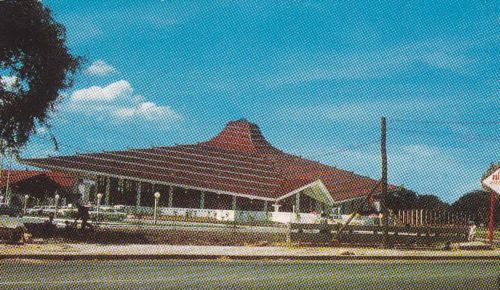
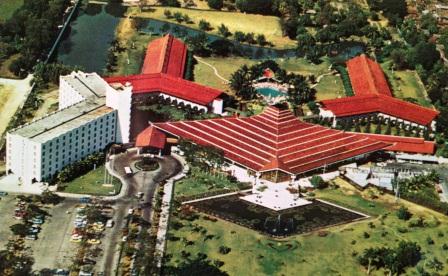
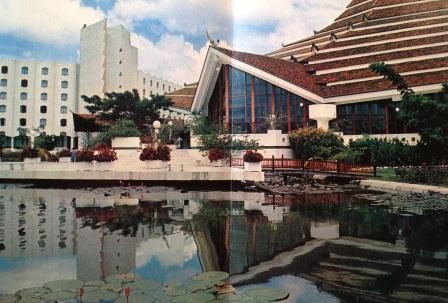

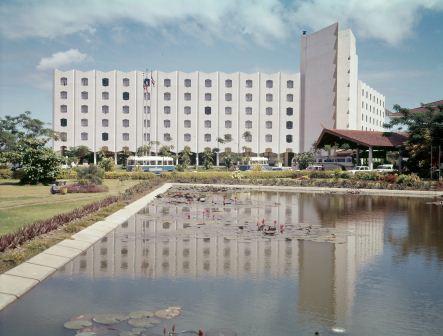

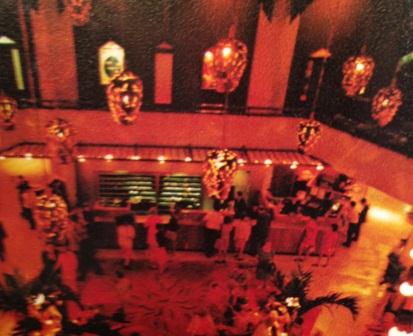
Interiors designed by Mr. Neal Prince, R.A., A.S.I.D (1966)
Location:
Bangkok, Thailand
Architect:
Jospeh P. Salerno, AIA (1915-1981)
Architectural Department, InterContinental
Hotels Corporation
Lead Interior Designer:
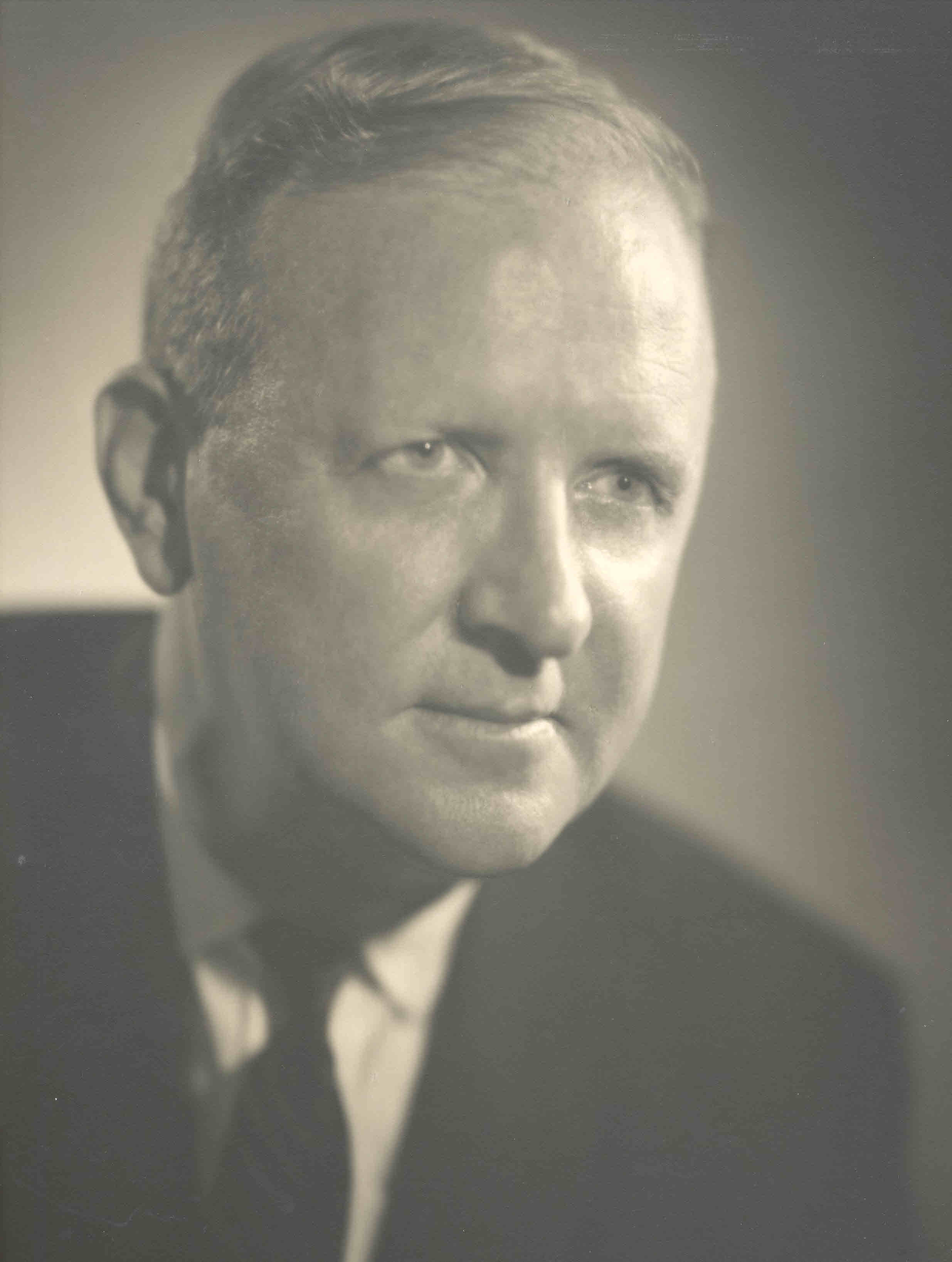
Neal A. Prince, R.A., A.S.I.D, Lead Designer
V.P. of Graphic and Interior Design Department,
InterContinental Hotel Group 1960-1985
InterContinental Hotel Opened:
1966
InterContinental Hotel Closed:
2002
Rooms:
411 completely air-conditioned guestrooms

Interiors designed by Mr. Neal Prince, R.A., A.S.I.D (1966)
How does Mr. Prince's identify an outstanding
Hotel?
Response: When you arrive at the Hotel,
telephone room service and order a club
sandwich to be delivered to your room. Once the
room service had delivered your requested club
sandwich, take a moment to access how it was
prepared, what materials they used to create
your club sandwich and then taste the sandwich.
Mr. Prince firmly believes, from 55 years of
travelling around the world that if a Hotel is
able to prepare the "simple" club sandwich
correctly, then that Hotel is being operated
correctly.
Restaurants/Lounges:
Specialty restaurant, 2 informal restaurants,
cocktail lounge and a pool snack bar.
Golden Palms Restaurant - Informal restaurant
- No Photograph is available at this
time-
Siam Grill (Menu):
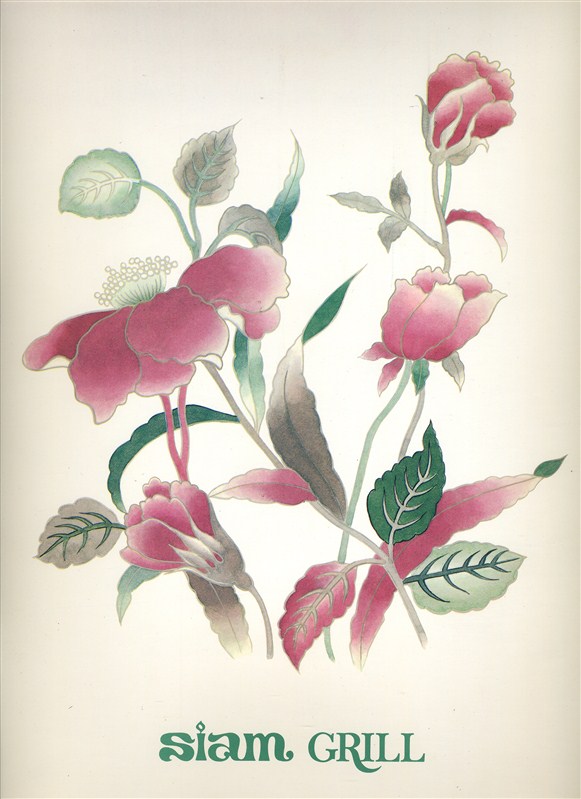
Naga Bar -

Photograph courtesy of Arie de Zanger, IHC
Photographer

Sample designed by Mr. Neal Prince, R.A., A.S.I.D (1966)
The Leopards Supper Club -
- No Photograph is available at this
time-
Meeting Facilities:
7 functional rooms accommodating up to 800
people.
- No
Photograph is available at this time-
Pool:
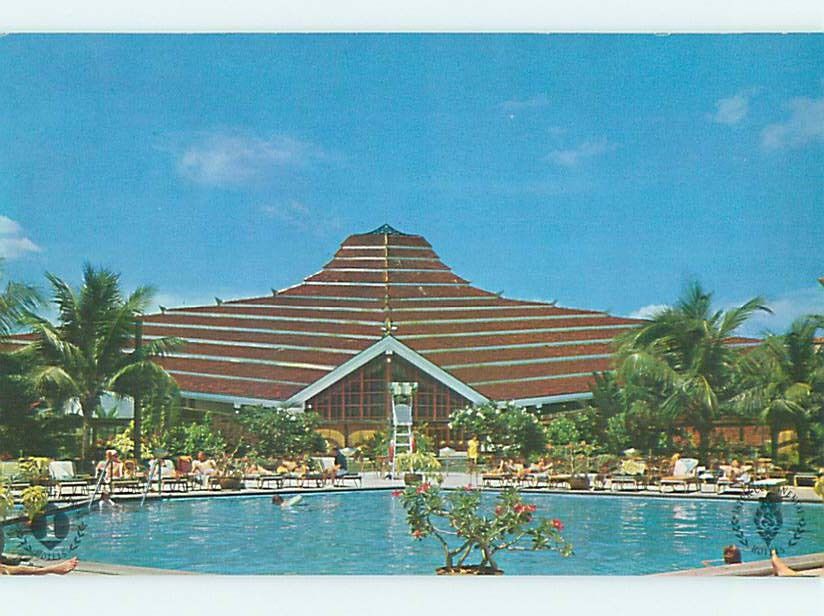


In the center of the city, adjacent to one of
the largest commercial centers, with easy
access to all of the sections of the city and
close to banks and cinemas.
Images held by the Collection:
|
|
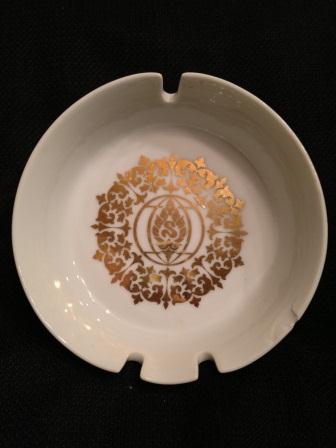
|
|
This earlier image is another example of the
detail graphics and designs that were created by
the talents of Charles R. Alvey and Richard
Simpson, of the InterContinental Hotel
Corporation's Department of Interior & Graphics
Design. This image is another example of
InterContinental Hotel's competitors copied for
their own Graphic's applications. In some hotels,
this image is used to this day. |
|
|
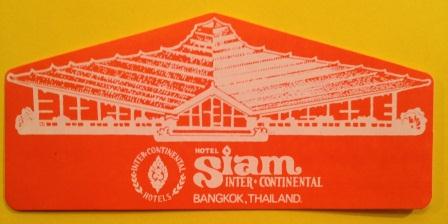
 |
|
This earlier image is another example of the
detail graphics and designs that were created by
the talents of Charles R. Alvey and Richard
Simpson, of the InterContinental Hotel
Corporation's Department of Interior & Graphics
Design. This image is another example of
InterContinental Hotel's competitors copied for
their own Graphic's applications. In some hotels,
this image is used to this day. |
|
|
|
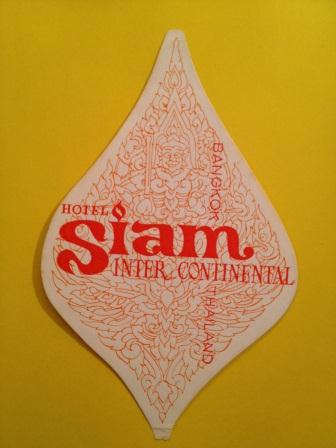
This earlier image is another example of the
detail graphics and designs that were created by
the talents of Charles R. Alvey and
Richard Simpson, of the InterContinental Hotel
Corporation's Department of Interior & Graphics
Design. This image is another example of
InterContinental Hotel's competitors copied
for their own Graphic's applications. In some
hotels, this image is used to this day.
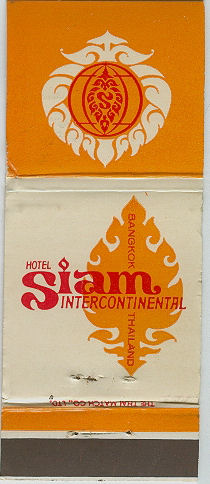
This earlier image
is another example of the detail graphics and
designs that were created by the talents
of Charles R. Alvey and Richard Simpson, of the
InterContinental Hotel Corporation's
Department of Interior & Graphics Design. This
image is another example of InterContinental
Hotel's competitors copied for their own
Graphic's applications. In some hotels, this
image is used to this day.
|
STATEMENT
OF
InterContinental HOTEL
INTERIOR
AND
GRAPHIC DESIGN
POLICY
BY
NEAL PRINCE,
ca. 1961
The approach to hotel design differs greatly
from interior design for an individual. The
latter is dictated by the aesthetic
environmental pleasures of one particular
person or family, whereas hotel design is a
coordinated effort between the functional
requirements if IHC Hotel Management and
Operations, the architectural concept and space
allocation, the desires of the local hotel
company, the limitations of restrictive
budgets, and the harmony and market of the
country in which a hotel is located – all
combined to produce a profit marking plant
reflecting the current international tastes of
a widely diversified market.
Although standardization would appear to be
desirable in a rapidly growing industry,
experience indicates the most successful
efforts are based on individuality related to
the country of origin rather than
standardization of design, but with an
overlying emphasis of international
standardization of quality and service.
Each hotel in each location produces its own
surveyed, conceptual, and operational
requirements of IHC, its own local interior
designers, and its own problems of local
availability and manufacturing; however, the
following outline of goals is generally
applicable:
A. To produce good design based primarily on
the functional needs and requirements of IHC
Operations in order that Management can
merchandise fully the facilities provided and
develop a high quality of service; this design
to be approached simultaneously along the
following avenues:
1. Concept (objectivity) – initiated by IHC
Operations and local Hotel Company (where
applicable).
2. Function (utility) – based on past
experience and current consumption of practical
innovation.
3. Construction (fabrication) – utilization of
local market facilities and methods wherever
possible.
4. Budget (feasibility) – dictated by market
surveys indicating the initial expenditure
warranted by projected profits.
5. Beauty (design) – a conglomerate result of
the thinking and ideas of all parties involved
coordinated into a smooth, compatible result.
B. To insure that the original design concept
and subsequent development of each project is
based not on the likes and dislikes of any one
faction but expresses the taste and insures the
comfort of the international guest; and also
utilizes, wherever possible, the trades,
manufactures and craftsmen as well as the arts
and crafts, ornamentation, styles, and
traditions indigenous to the country in which a
project is located.
End of the Siam Intercontinental Hotel

Built on 26 acres of Sra Paduma Palace
gardens in the 1960's, the Siam
Intercontinental Hotel was a well-know
Thai landmark. It won an award from the
Ministry of Science, Technology and the
Environment for its environmental
protection work in 1999. However, when
the hotel's 30-year lease expired, it
was torn down to make way for another
shopping center. The 26-acre gardens
will be reduced to a few acres.
Siam Paragon,
a mega luxury shopping center, is
planned for the site of the Siam
Intercontinental Hotel. The Paragon
will create an
unbelievable chain
of shopping centers along Phloenchit
Road starting with Mahboonkrong Center,
Siam Square (across the street), the
"Art Museum Shopping Center" (former
site of a planned art museum which has
been replaced with plans for another
shopping center), Discovery Center,
Siam Center, Paragon, Wat Padumavanaram
(a temple), World Trade Center (a
shopping center in financial trouble--a
rusting, unfinished tower looms over
the site and the adjacent wat), Gaysorn
Plaza (another failed shopping center
now under renovation), Erawan Sogo, etc,
etc. There's also lots of new shopping
center construction north on
Ratchadamri Road as well. More on
Bangkok's Crucible of Construction.
The Siam Intercontinental Bangkok sent
us some official info on the history of
the hotel: The Siam Intercontinental
Bangkok stands on 26 acres of prime
property in the heart of Bangkok,
belonging to the Royal Family. During
the fourth reign (1851-1868) of the
present Dynasty, King Mongkut ordered
the construction of a small palace for
royal recreation which was built in
this area and named by His Majesty as "Pathumwan
palace" meaning lotus palace. The
property was inherited by Prince
Mahidol of Songkhla, father of the
present King, who had Sra Pathum Palace
(Lotus Pond Palace) built. Of the 43
acres of the Royal Estate, Sra Pathum
Palace is located on 17 acres, with the
remaining 26 acres leased to the Siam
Intercontinental. One side of the
Palace shares the same wall with the
hotel and the hotel (shares a wall
with) Wat Padum Vanaram, a temple built
over 100 years ago. On December 11,
1964 at exactly 10:00am (the hour
designated by the Royal Astrologer as
being auspicious), Her Royal Highness
the Late Princess Mother unveiled the
foundation stone of the hotel. At that
time, the Siam Intercontinental was one
of the first international hotels in
Bangkok.
Source:
2Bangkok.com
DISCLAIMER: A considerable effort has
been made in good faith to ensure that
all information accessible from this
site of Archives and memoirs are
accurate. Despite this effort, it is
clear that errors are inevitable.
Consequently no guarantees are expressed
or implied as to the accuracy,
timeliness, currency or completeness of
any information authored by persons at
or agents of the Neal Adair Prince Trust
or its Estate Trust Holding affiliates,
or accessible using links from this
site. Nor is any warranty made that the
information obtained from this
Educational Archival site or that of an
affiliate is valuable or useful for any
purpose. A reader assumes full
responsibility for any actions taken
based on information obtained from this
Educational Archival Interior Designer's
web site. In particular, we emphasize
that the information available through
this site should not be interpreted as
professional International Interior
Designer advice. All information from
these archives, from this or any other
source, needs carefully to be reviewed
with your own trusted License Interior
Designer provider before being
acted upon in any way.
|
|
|
|
|
 |

